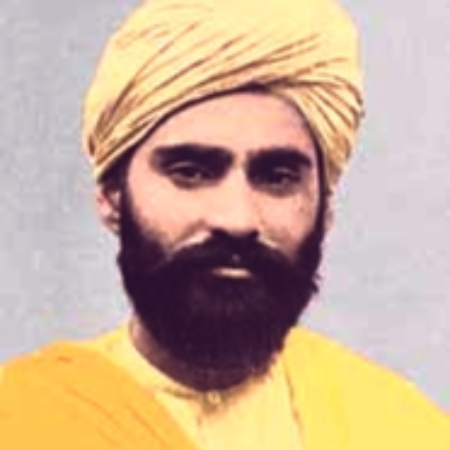Even though the Anglican Church does not officially recognise “saints” as people that were set apart by God, each Anglican Province has a calendar of commemoration to remember Christians that exhibited faith in a way that was significant for the Church. These men and women are reflective of the Christian faith through the ages and across the world. While in our publication people from the British Isles and New Zealand are heavily represented, there are also examples from other parts of the world. One of these is Sadhu Sundar Singh, who is remembered on 19 June.
Sundar Singh was born in in India in 1889 to well-to-do Sikh parents. As a teenager he vehemently opposed Christianity as a western intrusion and burned a copy of the Bible. He encountered the living Christ in a vision in December 1904. His family tried to dissuade him from becoming a Christian, but he cut off his hair and was baptised in an Anglican church on his sixteenth birthday. He travelled around India as an evangelist, endeavouring to present Christianity in a cultural form that would be meaningful to the peoples of India. The burden of his message was that Christ by his death saved us from our sins.
Sundar Singh was sent to a divinity school with a view to training for the ordained ministry in the Anglican Church. He left after only eight months. The expectation that he would minister only in Anglican churches was unacceptable to him, and he felt the theological study was too much about academic theology and not about the personal knowledge of Christ, which to him was the heart of his spirituality and the foundation of theological study.
Despite the fact that preaching Christianity was forbidden in Tibet, Sundar Singh paid annual visit there for several years from 1912. In his desire to emulate Christ, he undertook a major fast in 1913, and in the course of it had another vision of the glorified Lord.
He became known outside India. He visited England, America, and Australia in 1920 and Europe in 1922. He made a considerable impression as a modern saint and mystic, above all by the serenity and radiance of his appearance. Singh was appalled by what he saw as the materialism, emptiness and irreligion he found throughout the West. His health deteriorated from 1922. He set out for Tibet in April 1929 and was never heard of again. He probably died on the way.
It is helpful that in the Church we frequently call to mind the worldwide church, and acknowledge the work of someone even though he challenged the staid hierarchy of the Anglican Church.

